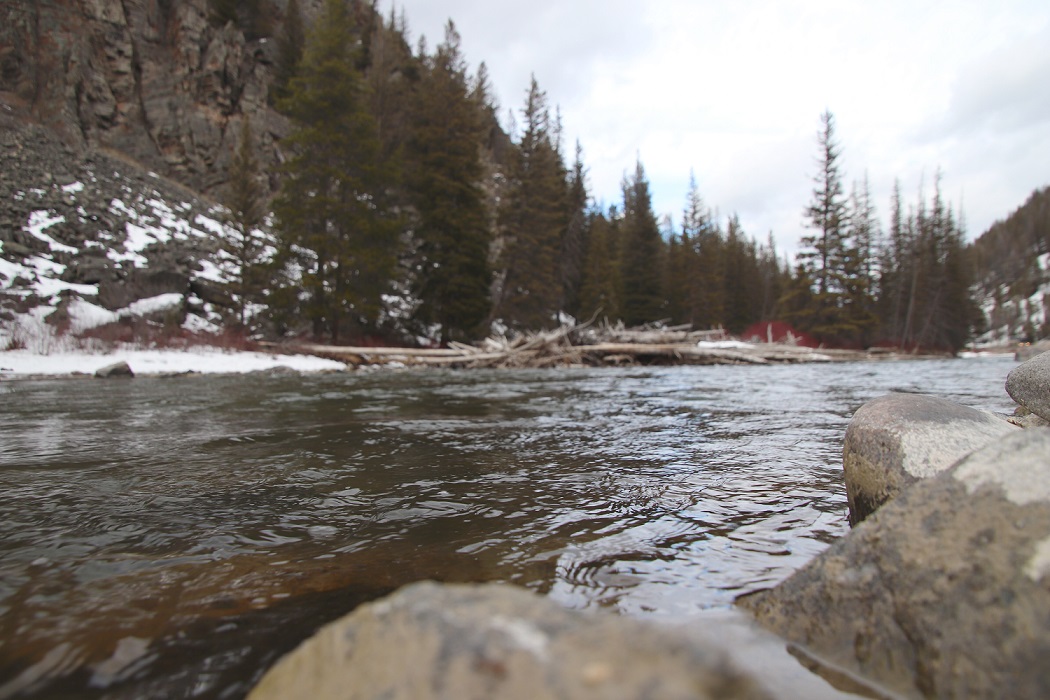By Jessianne Wright EBS Contributor
BOZEMAN – The Gallatin County Commission upheld its decision to submit comments on the recently released draft of the Custer Gallatin National Forest Plan during a public meeting Feb. 6, stating that the commission doesn’t currently support wilderness or wild and scenic river designations in Gallatin County.
The comment letter reads, “We are not opposed to designations for wild and scenic rivers or wilderness. However, we cannot support designations that will prevent the Forest Service’s ability to manage and protect our resources, our citizens and our economic sectors such as recreation. … We are open to discussions about wild and scenic river designations, but currently do not support them in Gallatin County due to the impacts [on] private property and the loss of flexibility when a need for management arises.”
Approximately 20 opponents to the letter appeared at the commission meeting and spoke against it, citing wide local support for protective designations to ensure healthy, free-flowing rivers and ecologically diverse open land for the future.
“The Gallatin River is storied and exceptional and it’s in our backyard,” said Bozeman resident Sally Dickinson. “I think it’s our responsibility, since it’s in our backyard, to protect it to the highest degree.”
Following the meeting, Charles Wolf Drimal, waters program associate for the Greater Yellowstone Coalition, wrote in an email to EBS, “Wild and scenic and wilderness are two common sense solutions to protect clean water, wildlife and traditional recreation on public lands. Every single public testimony expressed this sentiment to the county commission. But today the voice of public consensus fell on deaf ears.”
During the public hearing, speakers also expressed concern for the public process, saying the commission did not give advance notice of the hearing, and wasn’t specific in their published agenda.
“The open meeting law makes it very clear that elected officials should be very specific in their agenda items. … When I look at the agenda, there’s no word ‘wild,’ there’s no word ‘scenic,’ there’s no word ‘river,’” said Scott Bosse, Northern Rockies director of the water conservation group American Rivers.
“We acknowledge, as we did at the hearing, that this planning revision does not make designations of wild and scenic or wilderness,” wrote Commissioner Joe Skinner in an email to EBS. “This is the comment period and the commission feels that this is the appropriate time to make our comments concerning these issues based on a public health, safety and welfare perspective. We just want to comment that there are consequences to these designations that go beyond the boundaries of the designations and that these consequences must be considered when discussing potential areas to designate.”
The Forest Service released a nearly 200-page draft plan for the Custer Gallatin on Jan. 3, as a rough revision to the 1986 and 1987 plans. As a federally mandated requirement, planners identified all rivers eligible for wild and scenic designation under the 1968 Wild and Scenic Rivers Act. Planners also proposed several areas as recommended wilderness as a starting point for public feedback and consideration for the National Wilderness Preservation System. Ultimately, it takes an act of Congress to officially designate a wild and scenic river or wilderness area.
The agency identified 31 eligible rivers in the Custer Gallatin National Forest, including the Gallatin River for its “outstanding qualities” related to recreation, scenery and heritage. Once the final forest plan is approved at the end of 2019, those rivers that have been identified as eligible will be managed in a way that preserves these qualities.
During the commission’s hearing, American Rivers’ Northern Rockies Associate Director Mike Fiebig said that per the federal mandate, wild and scenic eligibility is supposed to be objective and if a river is found to meet the criteria of being free-flowing and exhibiting one of several outstanding qualities, it will be recognized in the Forest Service plan.
“It doesn’t have to do with social considerations, it doesn’t have to do with economic considerations, it doesn’t have to do with political considerations,” he said.
Fiebig is currently working with the coalition Montanans for Healthy Rivers in an effort to designate East Rosebud Creek wild and scenic, which originates in the Absaroka-Beartooth Wilderness and flows into the Yellowstone River west of Columbus. In December 2017, the bill that would make this designation passed with unanimous support from the U.S. Senate and is currently under consideration in the House.
“That’s an interesting contrast from what we heard from the commission yesterday,” Fiebig said in an interview. “We have this bipartisan bill for wild and scenic designation, for a river just down the road from us, fully supported by locals, and that didn’t affect the commission’s standing.”
In addition to identifying eligible rivers in the proposed plan, the Forest Service also proposes lands to be considered for wilderness designation as a starting point for public input. Four areas have been identified in southwest Montana: 70,614 acres of the Gallatin Crest from Hyalite Peak to Yellowstone National Park, which includes a portion of the Hyalite Porcupine Buffalo Horn Wilderness Study Area; the 14,287-acre Sawtooth area near Gardiner; the 4,466-acre Taylor Hilgard area in the Madison Range; and 17,983 acres of the Lionhead in the Henry’s Lake Mountains.
The remaining portion of the Hyalite Porcupine Buffalo Horn Wilderness Study Area has three management proposals: as a backcountry area where motorized or mechanized use might be suitable; as a recreation-emphasis area; or as an inventoried roadless area with no additional management overlaps.
“These acreages and designations are just starting points that can change or vary based on analysis, alternatives still to be made, public comment and decision maker authority through another two years of the planning process,” said Forest Service spokeswoman Mariah Leuschen-Lonergan. “At this point, this is only step two and recommendations to Congress do not occur until much later at the decision point in late 2019.”
Following the public comment period, the agency will establish alternatives this spring and summer, and seek comments on a draft plan that includes deeper analysis sometime in the fall.
The comment period to respond to the draft plan runs through March 5. Weekly webinars where specialists are available to answer questions have been held throughout the comment period, with the remaining sessions scheduled for Feb. 20 at 5 p.m., and Feb. 26 at 1 p.m.
To view a copy of the draft Custer Gallatin National Forest plan, visit www.fs.usda.gov/detail/custergallatin. There is also a printed copy of the forest plan available at the Big Sky Community Library.














